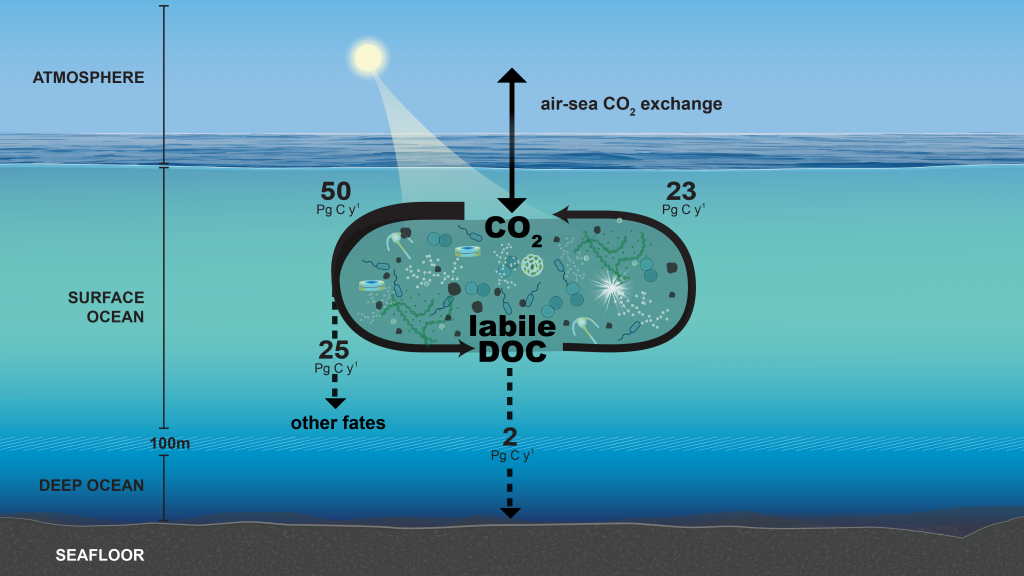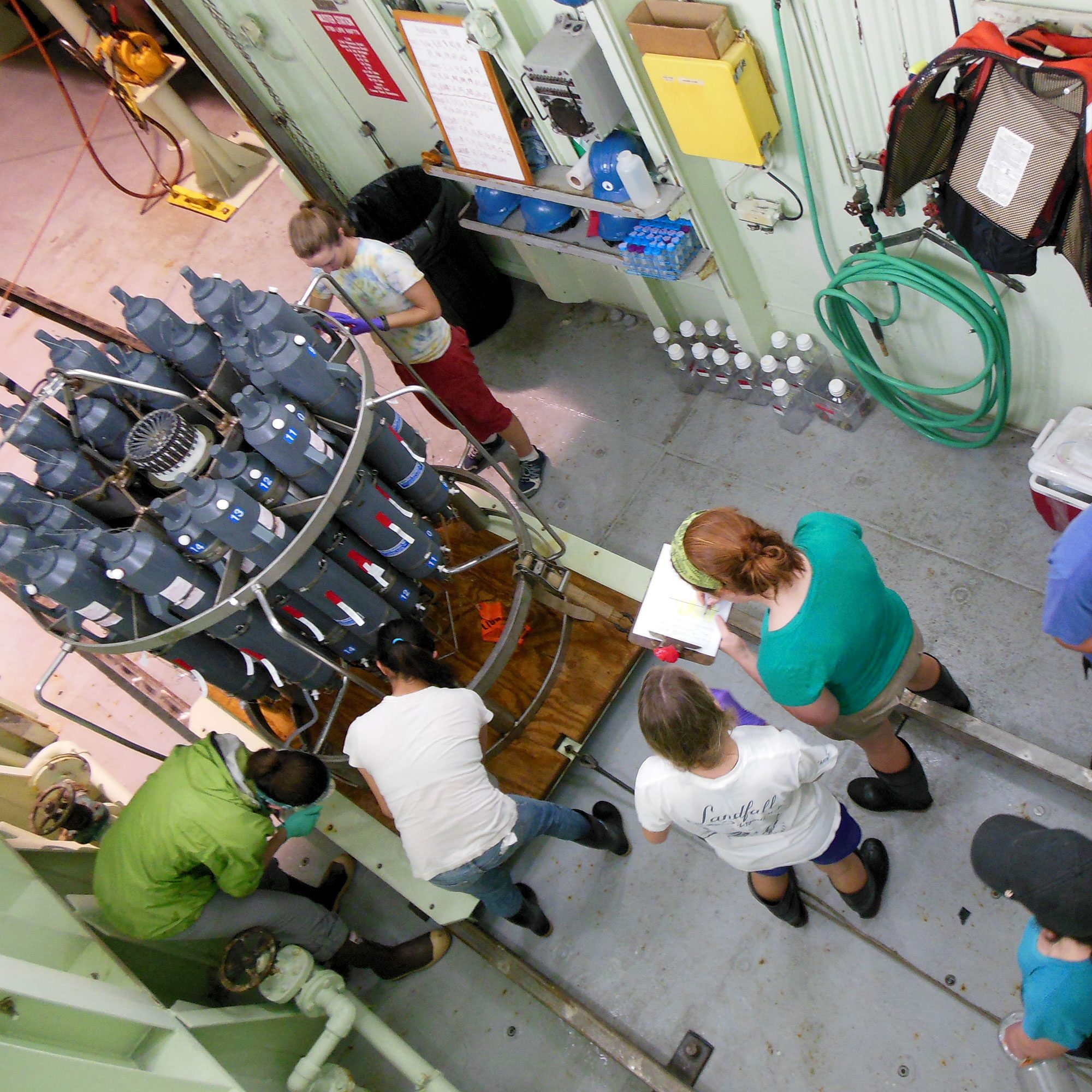About the Center for Chemical Currencies of a Microbial Planet (C-CoMP)
Motivation
One-quarter of the carbon derived from photosynthesis on Earth cycles rapidly through a pool of seawater metabolites generated by the activities of microbes. These molecules help govern the global carbon cycle, provide life-supporting nutrients, and support the function of marine food webs that ensure a vital and healthy ocean. The central mechanism of this fast cycle is a chemical-microbe network, but the controls on this network, and its links to carbon sequestration in the deep ocean, are not known. Its sensitivities to changing ocean conditions are also unknown, and responses to future climate scenarios are not predictable. The goal of the Center for Chemical Currencies of a Microbial Planet (C-CoMP) is to bring rapid and transformative advances to the understanding of the bioreactive molecules within the chemical-microbial network of the ocean carbon cycle that are responsible for a quarter of Earth's annual organic carbon flux.

Mission
The Center for Chemical Currencies of a Microbial Planet (C-CoMP) leverages recent advances in analytical and data sciences, incorporates new ocean sampling technologies and an open-science framework, and engages scientists, educators, and policy-makers who bring a diversity of expertise, experiences, and viewpoints to bear on promoting a deeper understanding and appreciation of the chemicals and microbial processes that underpin ocean ecosystems and other microbiomes that affect our daily life.
Video Overview
If you would like to learn more about C-CoMP, please view this video narrated by C-CoMP Director Elizabeth Kujawinski. This video provides context for the formation of C-CoMP, identifies C-CoMP's grand challenge, introduces C-CoMP's research and educational programs, and shares C-CoMP's approach to building a collaborative, integrated, and supportive research community. This video was created for our second Site Visit with the National Science Foundation.
Center Research Objectives
C-CoMP supports 14 senior personnel, working in interdisciplinary teams (involving undergraduate students, graduate students, postdocs, technicians, and support staff) with novel approaches and open science practices to resolve major outstanding knowledge gaps at the heart of the global carbon cycle:
(1) the chemical currencies of surface ocean carbon flux
(2) the chemical-microbe network in the surface ocean
(3) network sensitivity and feedbacks on climate.
These research focus areas are resistant to study and not yet integrated into global earth systems models, but central components of Earth’s carbon cycle. Given their complexity and urgency, these focus areas can only be addressed through a sustained network of scientists, students, and educators who work together to achieve research goals while expanding ocean science literacy efforts and broadening the workforce able to tackle multi-disciplinary problems.
Accordingly, C-CoMP is structured on three scaffolds that underpin research and link to education and outreach efforts. At the center are the Science Themes, representing critical knowledge gaps in metabolite-driven carbon cycling that govern the fate of a quarter of Earth’s primary production. The Critical Challenges scaffold represents current technological and conceptual roadblocks to knowledge building. The Enabling Tools and Technologies scaffold represents the emerging technologies to be created or repurposed to resolve scientific roadblocks.
Broadening Participation
Achieving C-CoMP’s mission requires the active engagement of scientists, educators, and policymakers who bring a diversity of expertise, experiences, and viewpoints. To this end, the Center operates according to our guiding principles for collaboration coupled with principles of equity, meaning consistently recognizing where power lies and redistributing power to be fairer and more just, and inclusion, meaning behaving in ways that explicitly and implicitly indicate that the thoughts, ideas, and perspectives of all individuals matter.
With these principles as touchstones, C-CoMP works to:
- Build knowledge and skills related to equity and inclusion among Center members, such as through our Equity & Inclusion in Undergraduate Research blog;
- Establish equitable policies and practices, like our principles for collaboration, which inform all aspects of the Center’s work, from recruitment and hiring to interactions during teamwork and meetings;
- Use equitable and inclusive mechanisms for communications as well as information and resource sharing within the Center;
- Design and implement initiatives to broaden participation in the ocean sciences, including promoting ocean science literacy and engagement in ocean science research; and
- Promote knowledge transfer guided by our open science policy and approaches to ensure rapid and broad information and resource sharing beyond the Center.

